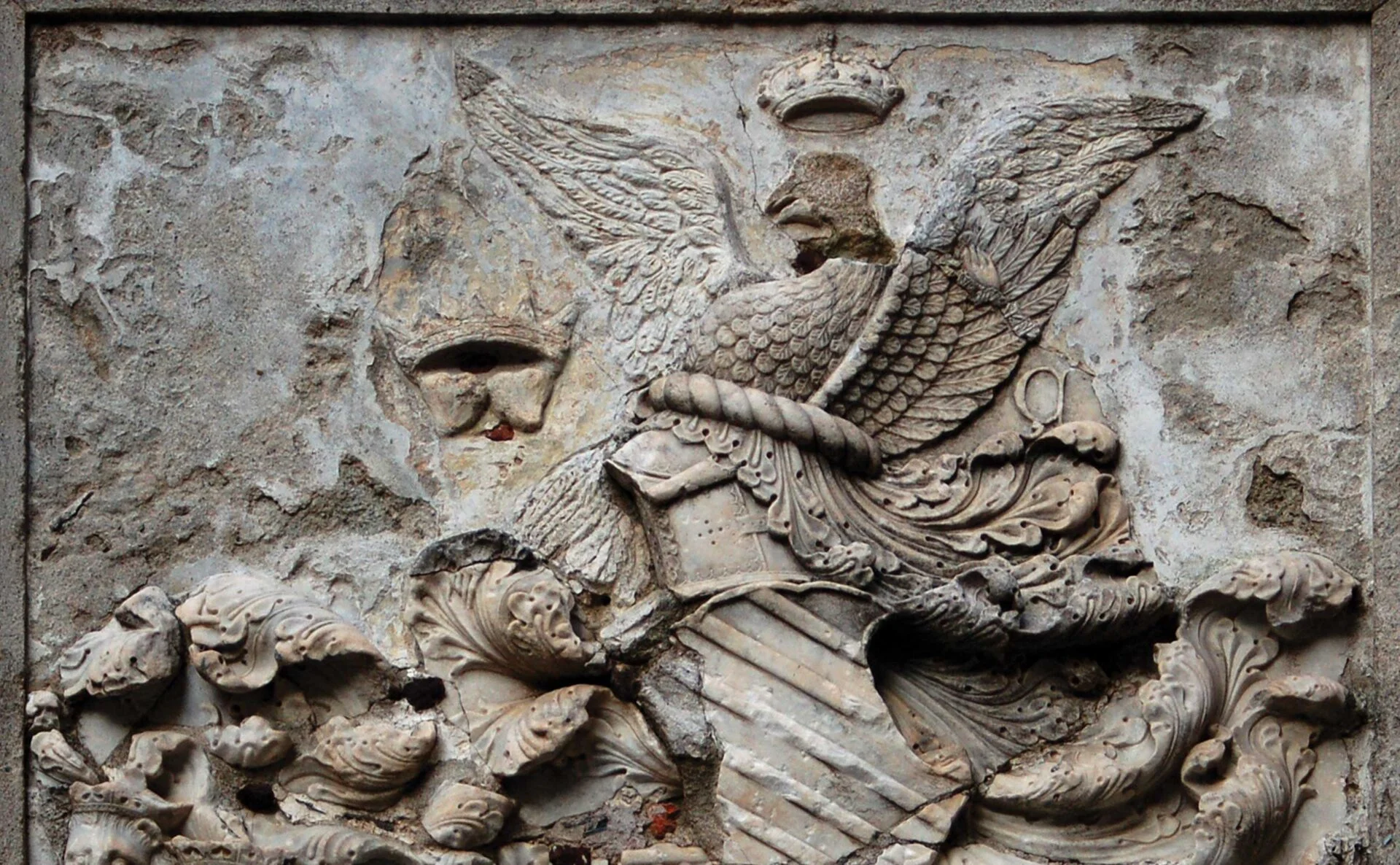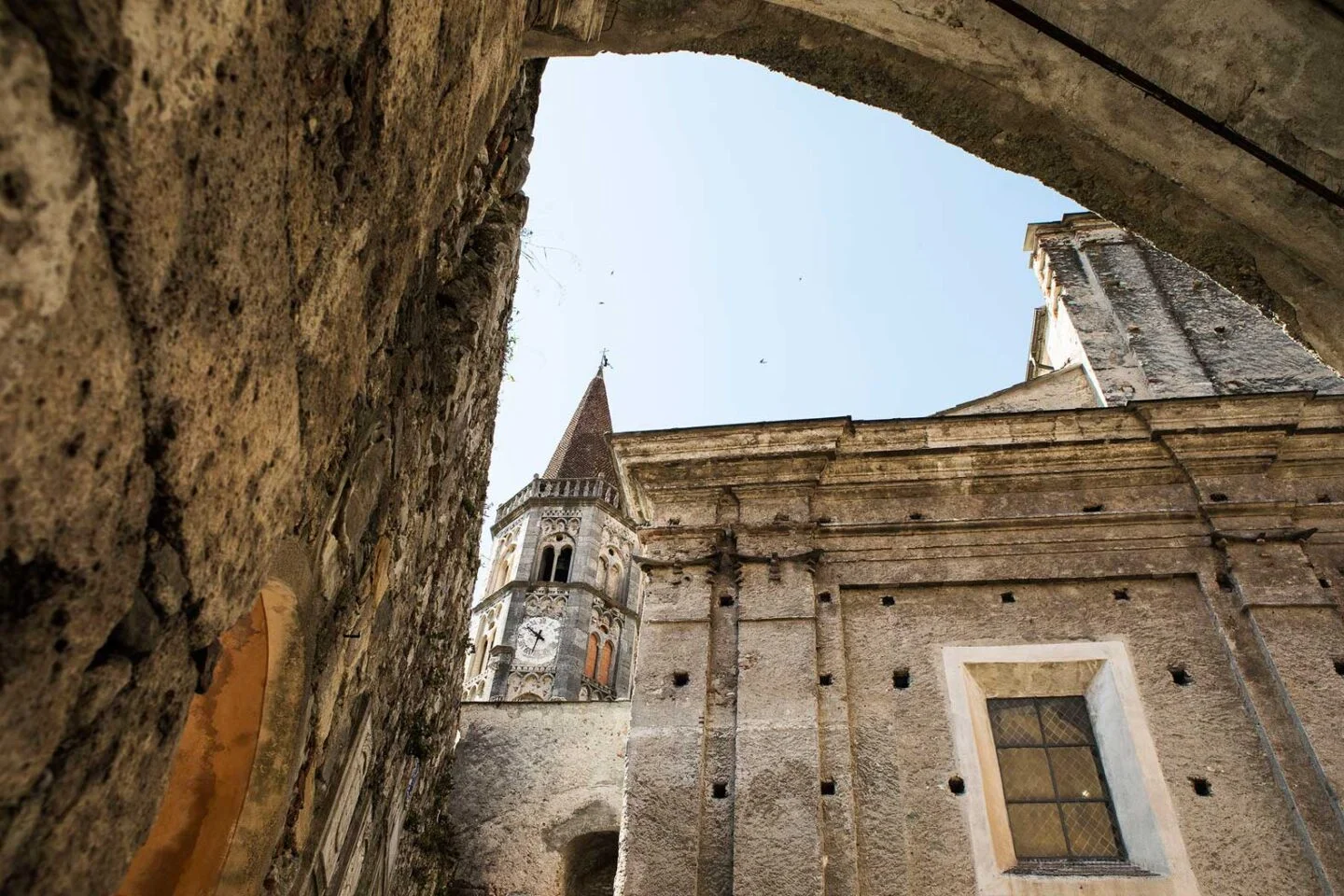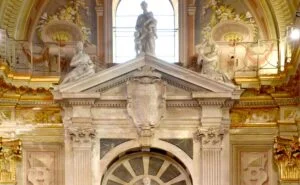

NOBLEMEN OF FINALE FOR CENTURIES. GREAT MEDIEVAL DYNASTY
Following in the footsteps of Del Carretto family
The journey in search of the Marquises Del Carretto begins in Piazza San Biagio in Finalborgo.
The itinerary can be divided into some easy to follow stages.
01.
San Biagio in Finalborgo
On the walls of the Borgo, we find a large marble plaque with a coat of arms of the Del Carretto family, on a chariot drawn by two crowned lions.
It is a tribute to the family, once placed on nearby Porta Carretta, built by Giovanni I Del Carretto in 1452, after the reconquest of the Marquisate.
The marriage of the Marquis to Viscontina Adorno gave birth to numerous children and enabled the rise of the family on the political scene of Renaissance Italy.
The carved coat of arms on the capital in Finale Stone at the bottom of the plaque can be linked to Giovanni and Viscontina.
02.
Chiesa di San Biagio
As you enter the Church of San Biagio, above the main portal, you can see the large funeral mausoleum of Sforza Andrea Del Carretto, the last Marquis of Finale, who died in 1602 after selling the Marquisate to Spain. The mausoleum has been moved here from the Church of Santa Caterina.
03.
Palazzo del Tribunale
Leaving the church and taking Via Torcelli, you reach the Piazza del Tribunale, Here you can admire the splendid painted facade of the Palace where justice was administered in the name of the Del Carretto family.
The Finale Stone bas-reliefs with the four cardinal virtues and the figure of the judge symbolize the good governance of the Marquisate.
04.
Chiostri di Santa Caterina
Here we reach the Renaissance cloisters of the Dominican Convent of Santa Caterina, which was under the patronage of the Del Carretto family, whose coats of arms adorn many of the Finale Stone capitals.
But to realize the importance of the Del Carretto family, it is necessary to take the Strada Beretta and climb up to Castel Gavone, their splendid fortified residence.
The magnificence of this castle can still be perceived despite the destruction ordered by Genoa in 1715 to also erase the memory of the Finale noblemen who had built, expanded, and transformed it into their prestigious residence.
For more information on the Renaissance monuments of Finale, visit our website at www.mudifinale.com
The monuments can be visited during guided tours (as part of the “Renaissance Itinerary”) organized by the Museo Diffuso del Finale and the Centro Storico del Finale.
Guided tours calendar: www.mudifinale.com




